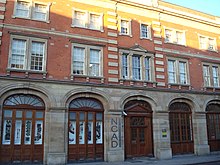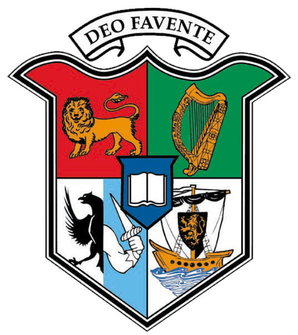
The University of Galway is a public research university located in the city of Galway, Ireland.

Declan McGonagle is a well-known figure in Irish contemporary art, holding positions as director at the Orchard Gallery in Derry, the first director at the Irish Museum of Modern Art, and as director of the National College of Art and Design, Dublin. He writes, lectures and publishes regularly on art and museum/gallery policy issues, and curates exhibitions.

The National University of Ireland, Maynooth, commonly known as Maynooth University (MU), is a constituent university of the National University of Ireland in Maynooth, County Kildare, Ireland. It was Ireland's youngest university until Technological University Dublin was established in 2019, having been founded by the Universities Act, 1997, from the secular faculties of the now separate St Patrick's College, Maynooth, which was founded in 1795. Maynooth is also the only university town in Ireland, all other universities being based within cities.

The Higher Education and Training Awards Council (HETAC), the legal successor to the National Council for Educational Awards (NCEA), granted higher education awards in Ireland beyond the university system from 2001 to 2012. HETAC was created in 2001, subject to the policies of the National Qualifications Authority of Ireland, and, specifically, granted qualifications at many Institutes of Technology and other colleges. HETAC was dissolved and its functions were passed to Quality and Qualifications Ireland (QQI) on 6 November 2012.

Third-level education in the Republic of Ireland includes all education after second-level, encompassing higher education in universities and colleges and further education on Post Leaving Certificate (PLC) and other courses.

St Patrick's, Carlow College, is a liberal arts college located in Carlow, Ireland. The college is the second oldest third level institution in Ireland and was founded in 1782 by James Keefe, then Roman Catholic Bishop of Kildare and Leighlin, and his co-adjutor bishop Daniel Delany.

Our Lady of Mercy College, Carysfort was a College of Education in Dublin, Ireland from its foundation in 1877 until its closure in 1988. Educating primary school teachers, and located in a parkland campus in Blackrock, it was a recognised college of the National University of Ireland from April 1975. The site is now the premises of the Michael Smurfit Graduate Business School, part of University College Dublin.
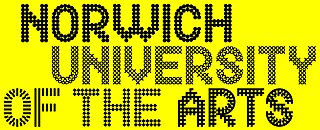
Norwich University of the Arts is a public university in Norwich, Norfolk, United Kingdom that specialises in art, design, media, architecture and performance. It was founded as Norwich School of Design in 1845 and has a long history of arts education. It gained full university status in 2013.
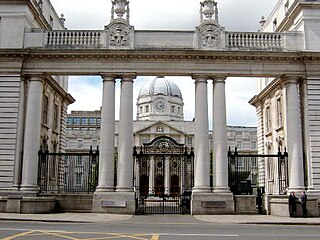
The Royal College of Science for Ireland (RCScI) was an institute for higher education in Dublin which existed from 1867 to 1926, specialising in physical sciences and applied science. It was originally based on St. Stephen's Green, moving in 1911 to a purpose-built "Royal College of Science" building on Merrion Street, now known as Government Buildings. In 1926 it was absorbed into University College Dublin (UCD) as the faculty of Science and Engineering.

Griffith College Dublin (GCD) is one of the longest-established private third level colleges in Dublin, Ireland.

The Liberties is an area in central Dublin, Ireland, located in the southwest of the inner city. Formed from various areas of special manorial jurisdiction, separate from the main city government, it is one of Dublin's most historic working class neighbourhoods. The area was traditionally associated with the River Poddle, market traders and local family-owned businesses, as well as the Guinness brewery, whiskey distilling, and, historically, the textiles industry and tenement housing.

Falmouth University is a specialist public university for the creative industries based in Falmouth and Penryn, Cornwall, England. Founded as Falmouth School of Art in 1902, it was later known as Falmouth College of Art and Design and then Falmouth College of Arts until 2012, when the university college was officially granted full university status by the Privy Council.
The Milltown Institute of Theology and Philosophy was a Jesuit-run institution of higher education and research, located in Dublin, Ireland. It was located in Ranelagh, County Dublin.

Ballyfermot College of Further Education is an educational institution in Ballyfermot, Dublin, Ireland, a college of further and higher education.
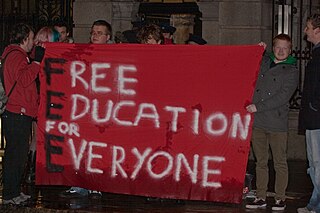
Free Education for Everyone (FEE) was an Irish student campaign group which was set up in September 2008 in University College Dublin (UCD) to fight the proposed re-introduction of university fees. FEE was active in Ireland's main universities, including University of Limerick (UL), University College Dublin (UCD), Trinity College Dublin (TCD), NUI Maynooth (NUIM), University College Cork (UCC) and NUI Galway (NUIG) and Queen's University Belfast.

Founded in 1854 as the Lambeth School of Art, the City and Guilds of London Art School is a small specialist art college located in central London, England. Originally founded as a government art school, it is now an independent, not-for-profit charity, and is one of the country's longest established art schools. It offers courses ranging from art and design Foundation, through to BA (Hons) undergraduate degrees and MA postgraduate courses in fine art, carving, conservation, and art histories. In addition, it offers the only undergraduate and postgraduate degrees in Britain in stone and wood carving: historic architectural stone and ornamental woodcarving and gilding.
Niall McCormack is an Irish painter. Since the 1980s, he exhibited in England, Italy, France, Sweden, the US, and Ireland.
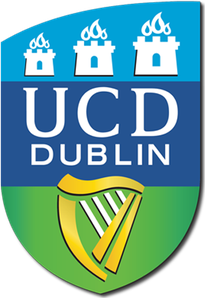
University College Dublin is a public research university in Dublin, Ireland, and a member institution of the National University of Ireland. With 38,417 students, it is Ireland's largest university, and amongst the most prestigious universities in Europe. Five Nobel Laureates are among UCD's alumni and current and former staff. Additionally, four Taoisigh and three Irish Presidents have graduated from UCD, along with one President of India.
NIVAL (National Irish Visual Arts Library) is a public research resource which is dedicated to the documentation of twentieth- and twenty-first-century Irish visual art and design. It collects, stores and makes available for research documentation of Irish art and design in all media. NIVAL's collection policy encompasses Irish art and design from the entire island, Irish art and design abroad, and non-Irish artists and designers working in Ireland. NIVAL is sustained by material contributions from artists, arts organisations and arts workers. Information is also acquired from galleries, cultural institutions, critics, the art and design industries, and national and local authorities responsible for the visual arts. NIVAL is housed on the campus of the National College of Art and Design (NCAD) in Dublin.
Carey Clarke is an Irish academic figurative painter, known for his landscapes, interiors, still lifes and portraits.
